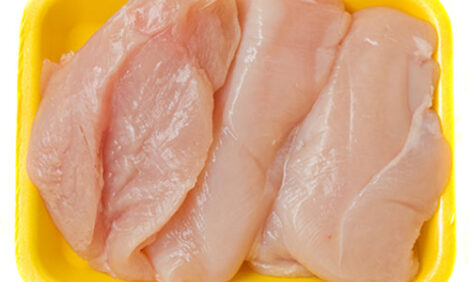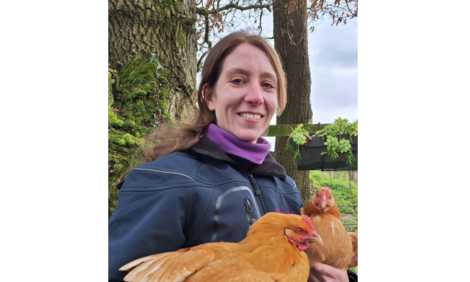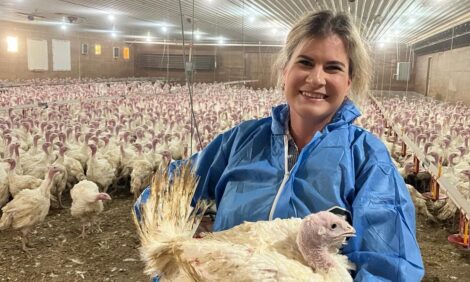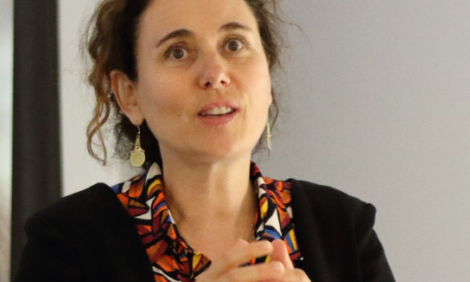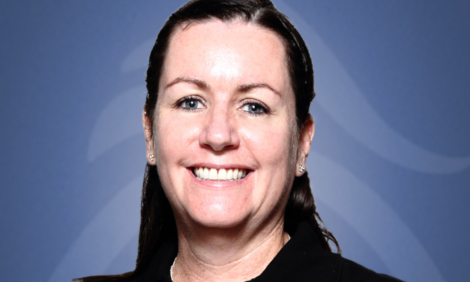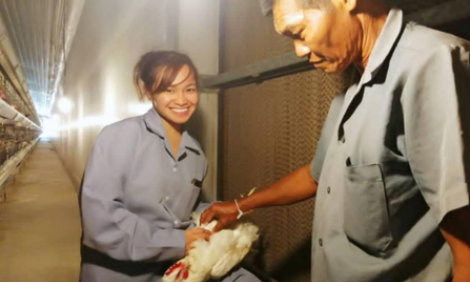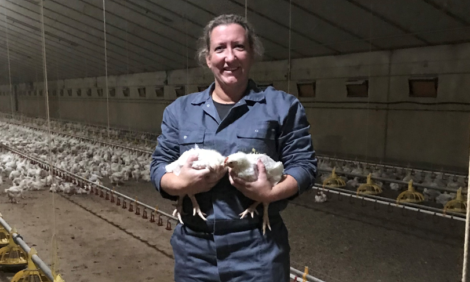



Women in Poultry: Kasey Guthrie
Learn more about Kasey Guthrie Microbiologist Lead Aviagen North AmericaPart of Series:
< Previous Article in Series
Describe a typical day in your current role?
No two days are alike, and that’s what makes my role so rewarding. I lead a team of microbiologists, both in the lab and the field, ensuring their priorities shape the day’s focus. My work balances leadership with hands-on lab research, supporting production and services teams, and conducting facility hygiene assessments. Each day brings fresh challenges and opportunities, but the dynamic nature of my role keeps me energized and inspired to make a meaningful impact every day.
What’s unique about your role?
What makes my role unique is the privilege to collaborate across all departments. This cross-functional interaction gives me a broad perspective of the company, a vast professional network, and access to an incredible wealth of knowledge. Seeing how everything connects allows me to lead more effectively and make meaningful contributions at every level.
What are the main challenges that you face in your role?
A main challenge is the unpredictability of health threats to our chickens. While we prepare and implement strong biosecurity measures, new disease challenges and unexpected outbreaks facing the industry require constant vigilance. Staying ahead means regularly evaluating risks and fostering a proactive, problem-solving mindset. The challenges can be demanding, but it also drives innovation and keeps our approach evolving.
What does the future of poultry health look like in terms of preventing and treating disease?
The future of poultry health lies in smarter, more sustainable solutions. Advancements in technology will improve early disease detection, enhance biosecurity and further enhance the judicious use of antibiotics. These developments will not only lead to healthier flocks but also support a more sustainable and responsible poultry sector moving forward.
Are there individuals or organizations in poultry who you’ve found particularly inspirational?
My journey began with my high school agriculture teacher, who introduced me to this field and encouraged me to pursue it. His belief in my potential and his guidance were pivotal in shaping my career. Since then, I’ve been fortunate to have incredible mentors who have advocated for me throughout my career. But what inspires me most today are the young women starting their careers in poultry. Their passion and determination remind me why mentorship is so important, and I’m committed to helping them succeed.
Have you encountered any challenges as a woman in your field? If yes, how have you overcome them?
Early in my career, I had to work hard to prove myself and earn respect in spaces that weren’t always welcoming. Instead of letting those challenges hold me back, I used them as motivation to demonstrate my value through expertise and hard work. Over time, I built a strong support network and learned the power of mentorship. Today, I’m proud to be part of a growing movement where women in poultry are breaking barriers and creating a strong frontier for others to thrive.
What outstanding challenge facing the poultry industry would you most like to solve?
One of the most pressing challenges is reducing and ultimately eliminating Salmonella. Despite ongoing efforts, it remains a food safety and public health concern. While biosecurity measures, processing interventions and on-farm best practices are helping, there's still work to be done. Addressing this challenge requires collaboration across the entire supply chain, and I'm excited to be part of that journey toward safer, more secure poultry production.
What’s the most exciting innovation that you see on the horizon for the poultry industry?
The most exciting innovation on the horizon for the poultry sector is the rapid advancement of technology. From precision farming tools and artificial intelligence to machine learning and smart sensors, technology is transforming the way we monitor bird health, optimize production and enhance biosecurity. Real-time data collection and analysis allow for better decision-making, improved animal welfare, and increased efficiency. As these technologies continue to evolve, they have the potential to revolutionize every aspect of poultry, driving it toward a more sustainable and productive future.
What are you most excited about in the next 5-10 years regarding the poultry industry?
I am most excited to see today’s efforts shape the future of poultry production. The work and investments happening today are laying the groundwork for a stronger, more efficient and responsible poultry sector. I look forward to seeing how the efforts we make now will drive meaningful progress, paving the way for a stronger future.
What’s your next challenge?
My next challenge is ensuring we never become complacent. It’s easy to rely on established practices, but real progress comes from constantly pushing for innovation and continuous improvement. My focus is on advancing biosecurity measures, fortifying health strategies and instilling a mindset where fresh ideas drive the sector forward. By staying proactive and adaptable, we can strengthen our approach and set new benchmarks for excellence.








